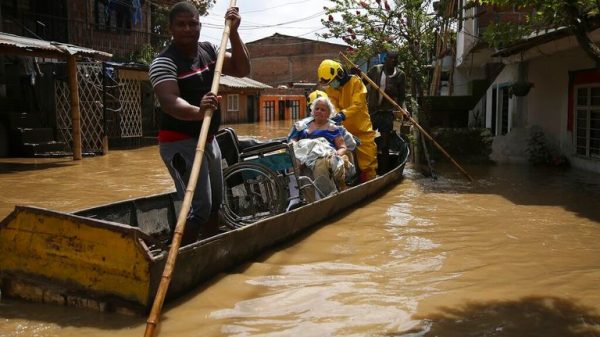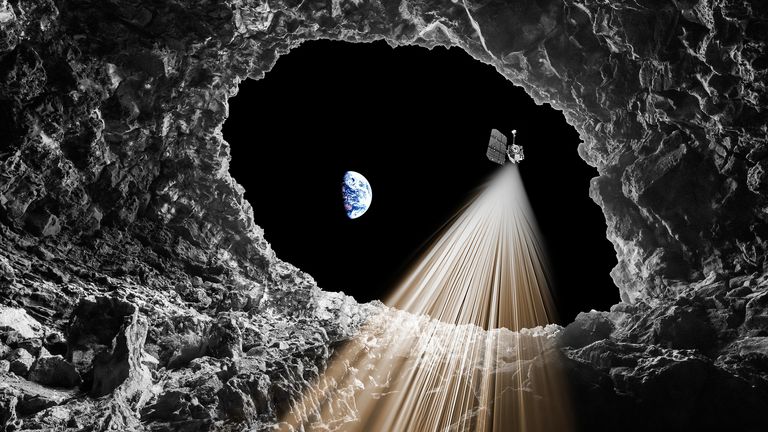An underground cave stretching tens of metres below an open pit on the moon has been discovered which could be a potential base for future astronauts, say scientists.
This is the first lunar tunnel to be found which could be accessible to humans, according to researchers.
The hollowed passage lies beneath a pit about 100 metres wide in the Sea Of Tranquillity, a dark region on the near side of the moon which is visible with the naked eye.
The region is also where the first humans on the moon, Neil Armstrong and Buzz Aldrin, touched down in 1969.
The cave is estimated to be 30-80m long (98-262ft), around 45m wide (147ft) and 130-170m (436-557ft) below the surface.
Previous caves found on the moon do not feature any entry points, the scientists added.
The “milestone discovery” comes as NASA prepares to send its first crewed mission to the moon in more than 50 years.
The moon is hostile to human life and its surface is exposed to powerful levels of cosmic radiation – but experts believe the underground caves could be “suitable for habitation purposes”.
Leonardo Carrer, an assistant professor at University Of Trento in Italy, said: “For the first time, we have located and accurately mapped a cave that is actually accessible from a pit on the lunar surface.
“We were able to obtain the first 3D model of a part of the cave’s actual shape.
“Building a base on the surface of the moon requires highly complex engineering solutions, which may be less effective than what is already provided by nature.”
Lorenzo Bruzzone, a professor at the university, added: “These caves have been theorised for over 50 years, but it is the first time ever that we have demonstrated their existence.”
The moon’s surface is exposed to cosmic radiation that is up to 150 times more powerful than Earth.
The surface is also vulnerable to frequent meteorite impacts and extreme temperatures, ranging from 127C to -173C.
Previous research has suggested underground caves have an average temperature of around 17C, creating suitable conditions for astronauts.
Commenting on the study, Mahesh Anand, professor of planetary science and exploration at the Open University, said: “The future exploration of the moon through extended human presence would require protection from the harsh environment and micrometeoroid impacts.
“In that context, these underground structures could provide a suitable location for habitation purposes.”
Underground lunar caves are ancient lava tubes created by volcanic activity billions of years ago.
Moon pits form when ceilings of lava tubes collapse.
For the study, published in the journal Nature Astronomy, the researchers re-analysed radar data gathered by NASA’s Lunar Reconnaissance Orbiter in 2009.



























